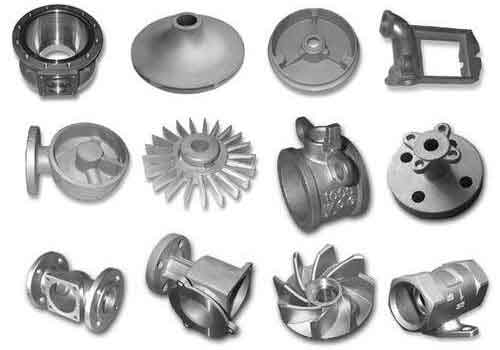Furan resin sand casting parts generally exhibit superior quality compared to clay sand counterparts, yet improper material selection, process design, or operational practices can lead to various defects. This article systematically analyzes critical defects and presents prevention methods through quantitative process control.

1. Gas Porosity and Pinholes
Despite high permeability, furan resin sand casting parts frequently suffer from gas-related defects due to excessive gas generation. Key factors include:
| Causal Factors | Preventive Measures |
|---|---|
| Resin addition >1.2wt% | Maintain resin content: 0.6-1.0wt% |
| Sand fineness >AFS 70 | Use 30/70 mesh sand with moisture <0.2wt% |
| Incomplete curing | Ensure 6-8 hr hardening time before pouring |
The gas generation potential can be calculated using:
$$ G = 0.85R^{1.2} + 0.12S_m^{0.7} $$
Where G = gas volume (mL/g), R = resin content (wt%), Sm = sand moisture (wt%).
2. Metal Penetration
Mechanical penetration in sand casting parts occurs when:
| Parameter | Acceptable Range |
|---|---|
| Sand compactness | ≥85% density |
| Coating thickness | 0.3-0.5 mm |
| Sand/binder ratio | 3:1 minimum |
Optimal coating viscosity follows:
$$ \mu = 1.2t^{0.5} + 25 $$
Where μ = viscosity (cP), t = coating temperature (°C).
3. Veining Defects
Silica sand expansion causes veining in sand casting parts. Control measures include:
| Material | Expansion Coefficient (×10-6/°C) |
|---|---|
| Fresh silica sand | 12.5 |
| Recycled sand | 9.8 |
| Chromite sand | 7.2 |
4. Hot Tearing
Thermal stress in sand casting parts is calculated as:
$$ \sigma = \frac{E\alpha \Delta T}{1-\nu} $$
Where E = Young’s modulus (GPa), α = expansion coefficient, ΔT = temperature gradient.
| Prevention Method | Effectiveness |
|---|---|
| 2-3% wood flour addition | Reduces stress by 40% |
| Zircon sand replacement | Deforms 25% less |
5. Slag Inclusion
Optimize gating design parameters for sand casting parts:
$$ F_{sprue}:F_{runner}:F_{gate} = 1.5:1.25:1 $$
Implement slag traps with volume:
$$ V_{trap} = 0.15V_{casting} $$
6. Dimensional Accuracy
Pattern compensation for sand casting parts:
| Material | Shrinkage Allowance (%) |
|---|---|
| Gray iron | 0.8-1.0 |
| Ductile iron | 0.6-0.8 |
| Carbon steel | 1.5-2.0 |
7. Surface Alloying Effects
Prevent carburization/sulfurization in sand casting parts using:
$$ C_{diff} = k\sqrt{t} $$
Where Cdiff = diffusion depth (mm), k = 0.12 for C, 0.09 for S.
| Coating Additive | Reduction Efficiency |
|---|---|
| Fe2O3 | 65% carburization |
| CaCO3 | 80% desulfurization |
Through systematic control of these parameters, sand casting parts produced via furan resin sand process can achieve defect rates below 1.5% while maintaining dimensional accuracy within ISO CT8-10 classification.
